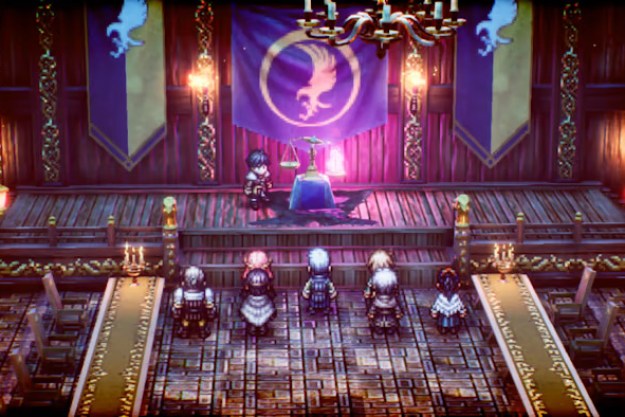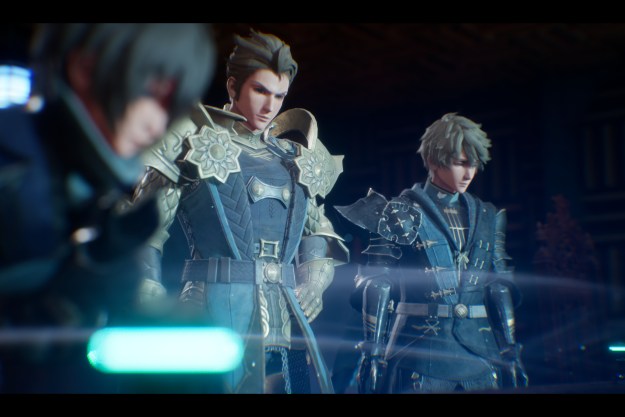The announcement for Ghostwire Tokyo, or perhaps Ikumi Nakamura’s presentation, really put this game on the map. Unfortunately, the game did end up taking quite a bit longer than most hoped to actually come out, and Nakamura herself even left the studio during development. Even so, this temporary PlayStation 5 exclusive launched and has gained plenty of praise for what it ended up being. It might not be quite as spooky as we were initially lead to believe, but the world, enemies, and story the game presents are all incredibly captivating.
Even though Ghostwire Tokyo puts you in a familiar perspective, that being first person, it has quite a unique style of gameplay all its own. You’re not shooting guns in this adventure, instead relying on spells and other mythical tools to fight some very creative Japanese yokai. It all looks very flashy, fluid, and satisfying in the previews, but becoming adept enough to pull off those maneuvers takes some practice and know-how. From combat tips to general world advice you might not think of, here’s a handy beginner’s guide to Ghostwire Tokyo to give you a helping hand.
See more
Understand your spells

Your main method for attacking in Ghostwire Tokyo will be your magic spells. In a very Naruto fashion, your character Akito will unleash a variety of spells through a series of complex hand gestures. The three spell types you get are Wind Weave, Water Weave, and Fire Weave.
Wind Weave is your most standard spell and has the most “ammo” of any spell in Ghostwire Tokyo. It starts out as a pretty standard shot but can be charged to shoot multiples based on your upgrades. This is good for single-target damage that has a fast rate of fire. It is the weakest spell but will be one you fall back to most often, so getting to grips with it is well worth your time.
Water Weave is something like a shotgun. It has a wide area of effect but only medium range and can deal damage to an entire group at once. It’s perfect for when you’re getting swarmed or are backed into a corner. Charge it up to further increase the width of the projectile to hit even more enemies easily.
Fire Weave is the big rocket launcher-style spell of Ghostwire Tokyo. As such, this spell will obviously pack a major punch but travels very slowly. You will need to aim carefully since it can’t lock on or track targets, and fast-moving ones can easily avoid it. However, if you charge it up, the spell will really resemble a rocket since it will also deal splash damage just like an explosion.
While not one of your normal spells, another major combat option you will want to keep in mind is the Wire-In ability you get in chapter two. When activated, this skill sends out an AoE blast that not only stuns any enemy in range but also slows down time and exposes their core for an easy finisher. This ability, unlike the others, only recharges based on how many enemies you beat once it’s been used, which might make you want to hoard it for dire situations. You don’t want to throw it out for nothing, but it charges up so fast that there’s not much reason to think of it as too good to use whenever you feel a bit pressured.
Strafe and block

It would feel right at home here, and yet Ghostwire Tokyo doesn’t have any kind of true dodge mechanic. That leaves your only two options for avoiding damage either strafing or blocking. Strafing is the most basic tactic but works well enough most of the time. Most enemies want to get in close, so backpedaling is probably going to be your natural instinct. Kite enemies like this or by doing the tried-and-true circle strafe method of circling around them while dishing out damage. Unless an enemy is open to a core purge, you almost never want to be the one advancing toward the enemy in combat.
Even the most skilled strafers out there aren’t going to be fast enough to avoid everything these yokai throw at you in Ghostwire Tokyo. Ranged attacks specifically are incredibly hard to avoid completely, which is where your block comes in handy. Even though there’s no dodge, or perfect dodge, the block does come with a perfect block mechanic, otherwise known as a parry. If you hit the Block button just as an attack lands, you get the opportunity to counterattack without taking any damage. Normal blocks do reduce damage but don’t completely negate it. If the attack you perfect-block was a projectile, it will reflect it back at the enemy who launched it, stunning them.
Be like Superman

What might be even more supernatural and unbelievable than even the ghosts in Ghostwire Tokyo are the phone booths. These relics of not that long ago are a key mechanic in the game, but not for making calls like they once were — at least not normal calls, anyway. Instead, heading into one of these cramped compartments is how you set free all the trapped souls you’re carrying around with Katashiro. Katashiro has a somewhat frustratingly limited capacity for souls, though, meaning you will quickly fill up and need to clear it out at the nearest phone booth or risk a situation where you can’t collect any more souls.
You can also purchase more Katashiro, but they’re rather expensive, and phone booths are much more common than they are in real life, so it’s easy enough to just make a detour every time you’re near one.
Pet the dog, feed the dog

One of the benefits of all the humans in Ghostwire Tokyo disappearing is that we get to spend way more time interacting with the much more appealing cats and dogs. Cats are great for pointing out where collectibles are nearby, and they run a couple of shops to buy items. Both can be pet, and you’re doing it wrong if you don’t, but while dogs can’t sell you anything, there is a benefit to making sure you have some dog food on hand while exploring the streets.
If you encounter a dog and can feed them, they will lead you directly to some nearby loot, whether it be money, an item, or sometimes a yokai in need of help for Magatama. Dogs, in particular, are very common and in need of plenty of pets and treats, so never leave home without a supply of dog food at the ready.
Abuse your Spectral Vision

Just about every modern game with exploration elements these days has some version of Spectral Vision. Most commonly called “Detective Vision” thanks to the Batman games, Ghostwire Tokyo has its own version available to you once you start the game’s second chapter. This will outline basically everything you’d want to see in your immediate area, including enemies, items, animals, and collectibles. This is very handy during side missions where you’re sent to locations to find a specific object but not given the exact location, as well as during combat when you’re trying to stay in stealth since it highlights anything even if they’re on the other side of a wall or object. There’s no downside to using it as much as possible, and it can be upgraded too, so turn it on often.
Explore and do side missions

Ghostwire Tokyo is one of the most accurate and inviting depictions of Tokyo ever made in a game, despite being populated by tons of ghosts. At the same time, those same enemies are by no means pushovers. The only way to keep pace with the game is to keep yourself leveled up and upgraded between main quest missions. Thankfully, this doesn’t feel like a grind at all since it encourages you to explore the world as much as possible. Exploration will reward you with tons of items, cash, animal encounters, and other treasures you find using your Spectral Vision, but also a huge number of side quests.
Side quests never take long but have multiple benefits. From a lore perspective, they’re genuinely interesting to learn more about what’s going on in Ghostwire Tokyo and get a bit of real-life information on Japanese folklore at the same time. Inside the game, you’re going to be earning a nice payout of spirits and meika for more XP and currency. You can easily complete a bunch of these without a major time commitment or headache since they’re all pretty simple, and then get a nice power boost before heading back into the more serious challenge of the main questline.
Editors' Recommendations
- Cities: Skylines II beginner’s guide: tips and tricks to get started
- One Piece Odyssey: tips and tricks to get started
- Sonic Frontiers beginner’s guide: 5 tips and tricks to get started
- Tunic beginner’s guide: 8 tips and tricks to get started
- Ghostbusters: Spirits Unleashed beginner’s guide: 8 tips and tricks to get started



